If there is one uninvited miniature houseguest no one wants to welcome into their home, its bed bugs. People have been locked in an arms race against this persistent pest for millennia now, yet they are still with us.
Many people who find their bed has become infested with these creepy critters, look in their cupboards for a rescue and ask themselves, “Can bleach kill bed bugs?” Happily, the answer is yes, so don’t freak out. Good old household laundry bleach is a cheap, reliable solution that is close at hand.
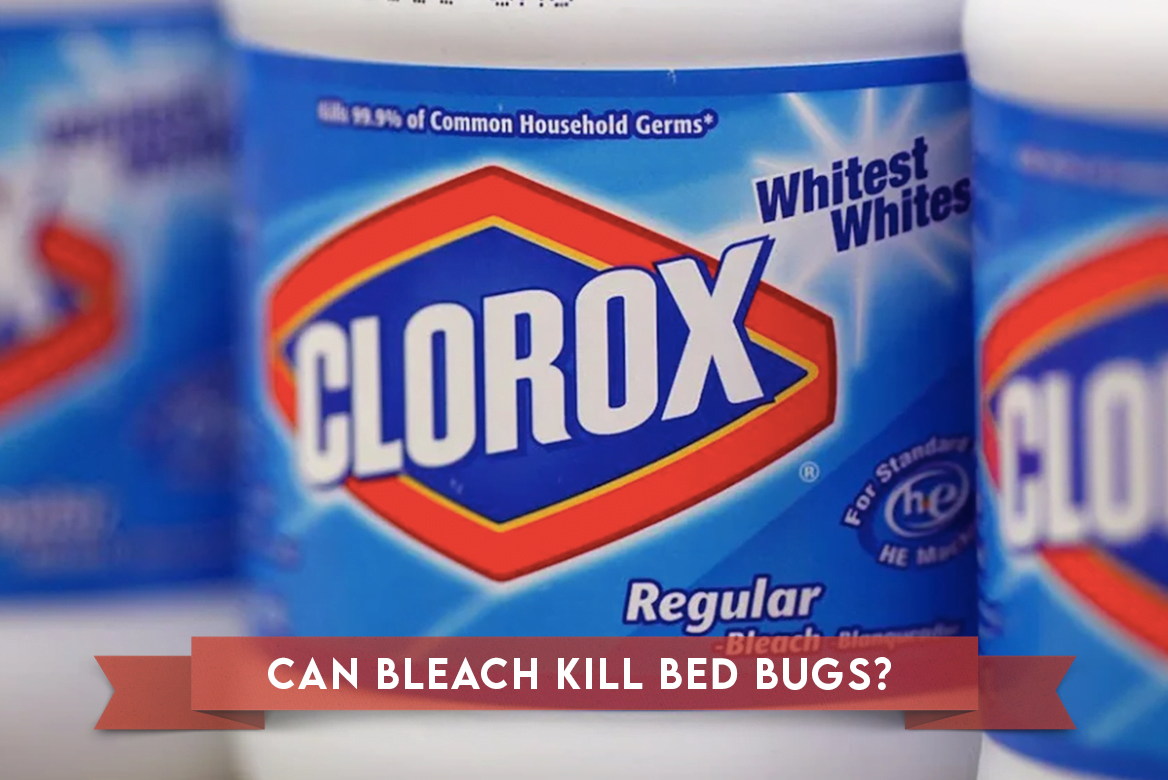
What Exactly Is A Bed Bug?
Bed bugs are very small parasites that feed on blood. They come in many different species, with the most prevalent bed bug species commonly found in people’s homes are Cimex lectularius and its cousin Cimex hemipterus.
Mature bed bugs are flat, wingless and oval-shaped, approximately four to five millimetres long and brown in colour. They can survive for months without having to feed.
Signs You Have Bed Bugs
The sure signs you may have bed bugs are their telltale bites. Bed bugs usually feed on exposed areas including your face, neck, hands and arms. It can take anything from a few minutes through to several hours before the bug bites become fully visible.
Typically, you experience itching and reddening of the skin around the area of the bites. If you are unfortunate and are allergic to the bed bugs’ saliva, you may also discover skin lesions forming in tight clusters or in a linear pattern. Constant exposure to bed bug bites may exacerbate the symptoms
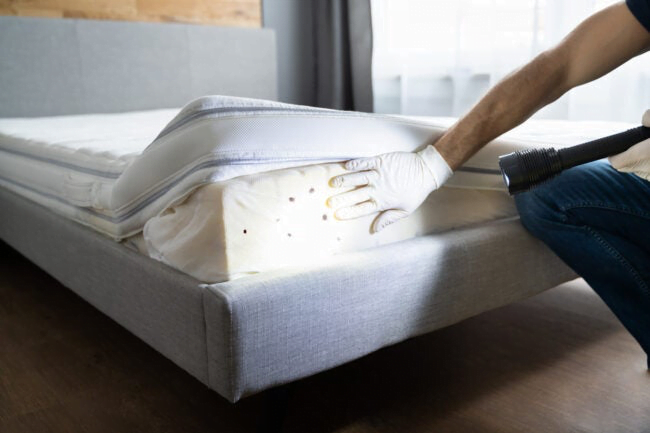
Can Bleach Kill Bed Bugs?
The short answer is yes; bleach can absolutely kill bed bugs and their eggs stone dead. In fact, it is one of the easiest bed bug treatments around. Bleach is a weapon of mass destruction among bed bugs. So, if you want to get rid of bed bugs, reach for the bleach.
Bleach is fabulous for sanitizing clothes, but can a typical jug of Clorox bleach kill bed bugs?
The mechanism behind this is that bleach contains a high concentration of sodium hypochlorite, which can damage the bed bug’s exoskeleton and dehydrate its body. When bed bugs come into contact with bleach, the sodium hypochlorite penetrates their protective outer layer and disrupts the insect’s cellular function, leading to their death. The strong odor of bleach can also act as a repellent for bed bugs.
No wonder bed bugs hate bleach!
Can Bleach Kill Bed Bug Eggs?
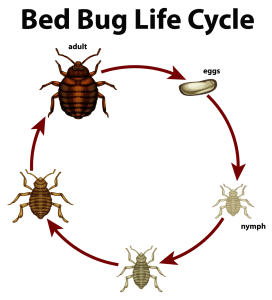
Those sneaky bed bugs prefer to hatch their eggs in dark areas such as holes or crevices in your mattress, pillows, even clothes. If you wake up with telltale red bed bug bite marks, you don’t need to see bed bugs to know they are there. Make sure your home doesn’t become a breeding ground for these pests.
Happily, the chemical ingredients of bleach will destroy bed bug eggs just as effectively as it kills adults. Make sure to treat all of your clothes and linens thoroughly to eliminate bed bugs, their eggs, and their larvae.
Can Bleach Kill Larvae Of Bed Bugs?
Bleach is the best solution when it comes to killing the bed bug larvae. Just as with their eggs, bed bug larvae are tiny and very difficult to spot. So, you need to be thorough with your bleach spray and make your bleach solution works its way into even the smallest crevices.
Can I Use Bleach On A Mattress?
You can get rid of bed bugs in your mattress with a bleach spray, however, if you suspect your mattress is badly infested it’s probably time to think about buying a new mattress and mattress cover. Always use a color-safe bleach spray to protect the surface of your mattresses.
When you buy a new mattress, you will want to protect your mattress from being attacked by these annoying bugs. Cover your mattress and pillows with a bed bug proof mattress encasement.
How To Use Bleach To Kill Bed Bugs
Common household bleach such as Clorox bleach kills bed bugs. To rid your home of these pervasive pests, follow these simple steps:
- Identify the site of the bed bug infestation
- Remove the contents of your wardrobe and linen closet and soak them in bleach
- To create your own bleach solution, fill a spray bottle with equal volumes of bleach and hot water
- Spray all the likely hiding places such as crevices, cracks in your flooring, your bed frame and the surfaces of your furniture
- Finally, thoroughly mop your floors with this bleach solution, paying particular attention to your bedroom, laundry, linen closet and wardrobe
- Identify the site of the bed bug infestation
- Remove the contents of your wardrobe and linen closet and soak them in bleach
- To create your own bleach solution, fill a spray bottle with equal volumes of bleach and hot water
- Spray all the likely hiding places such as crevices, cracks in your flooring, your bed frame and the surfaces of your furniture
- Finally, thoroughly mop your floors with this bleach solution, paying particular attention to your bedroom, laundry, linen closet and wardrobe
Limitations and Risks of Using Bleach for Bed Bug Treatment
If you want to use bleach to kill bed bugs, you should be aware of its limitations and risks.
Bleach is a strong chemical that can affect your health negatively. Bleach can also damage some materials and surfaces that it comes in contact with. It can stain or destroy fabrics and painted walls, for instance. You need to check a small spot first before you spray bleach on a larger area.
Potential Harm To Humans, Pets, And The Environment
While bleach can be effective in cleaning, it is important to be aware of its potential harm to humans, pets, and the environment.
Firstly, bleach can cause skin and eye irritation, respiratory problems, and other health issues if inhaled or ingested. Direct exposure to bleach can cause burns and irritations, especially to those with sensitive skin. The fumes of bleach can also cause breathing difficulties and trigger asthma attacks. Therefore, it is crucial to handle bleach with care and follow safety precautions such as wearing protective gloves and a mask.
In addition to the potential harm to humans, bleach can also be dangerous to pets. If pets accidentally ingest bleach, it can cause vomiting, diarrhea, and even death in severe cases. Pets can also inhale bleach fumes, leading to respiratory problems.
Moreover, the use of bleach can have a negative impact on the environment. When bleach is washed down the drain, it can react with other chemicals in the water and form harmful byproducts such as dioxins and furans. These byproducts can pollute waterways and harm aquatic life.
Bleach may not be a long-term solution for bed bugs, either. Bed bugs can develop resistance to some chemicals over time, which means they can live even after you use bleach. You may have a hard time eliminating bed bugs with bleach alone.
While bleach can be effective in cleaning and disinfecting, it is important to use it with caution and awareness of its potential harm to humans, pets, and the environment. It is advisable to use natural cleaning alternatives or seek professional cleaning services to minimize the risks associated with the use of bleach.
Alternative Methods for Safe and Effective Bed Bug Treatment
Fortunately, there are alternative methods available that can help control and eliminate bed bugs without the potential harm to humans, pets, and the environment.
One of these methods is heat treatment. Bed bugs can’t survive high temperatures, so you can kill them and their eggs by heating up the infested areas to more than 120 degrees Fahrenheit. You can use special heaters or put infested items in a hot dryer for at least 30 minutes. Heat treatment is a good choice because it does not use any chemicals.
Another method is diatomaceous earth, a natural substance that comes from the fossilized shells of diatoms. This substance dries out the bed bugs and their eggs, causing them to die. Diatomaceous earth is harmless to humans and pets, so you can use it without worrying about the possible harm of chemicals.
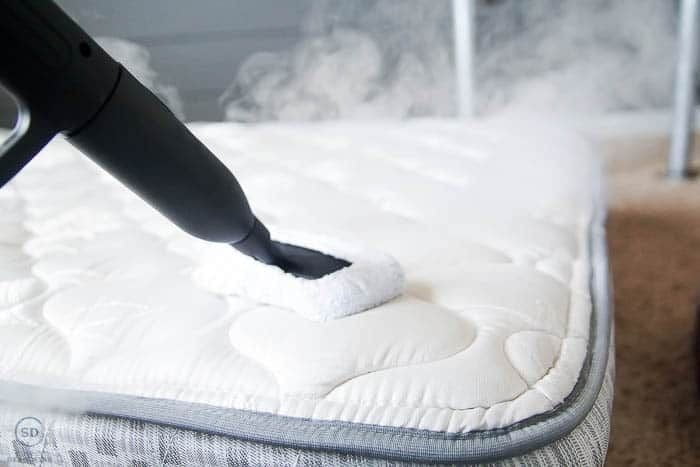
Steam cleaning is also a good way to deal with bed bugs. Hot steam can reach into the places where bed bugs hide, such as cracks and crevices, and kill them and their eggs. Steam cleaning is safe for humans and pets, and does not need any chemicals.
Regular vacuuming of infested areas can help to remove bed bugs and their eggs. However, it is important to use a vacuum with a high-efficiency particulate air (HEPA) filter to prevent the bed bugs from escaping.
Chemical Treatments To Kill Bed Bugs
- Pyrethroids: This is a class of insecticides commonly used to control bed bugs. Pyrethroids are synthetic chemicals that mimic the effects of natural pyrethrins, which are found in chrysanthemum flowers. They are often used in combination with other chemicals.
- Neonicotinoids: These are a type of insecticide that works by disrupting the nervous system of insects. They are commonly used in bed bug control because they have a long residual effect, meaning they can continue to kill bed bugs for several weeks after application.
- Insect growth regulators (IGRs): These are chemicals that interfere with the normal development of insects, preventing them from reaching adulthood. They are often used in combination with other chemicals to control bed bugs.
How To Avoid Bed Bugs Infestation In Future?
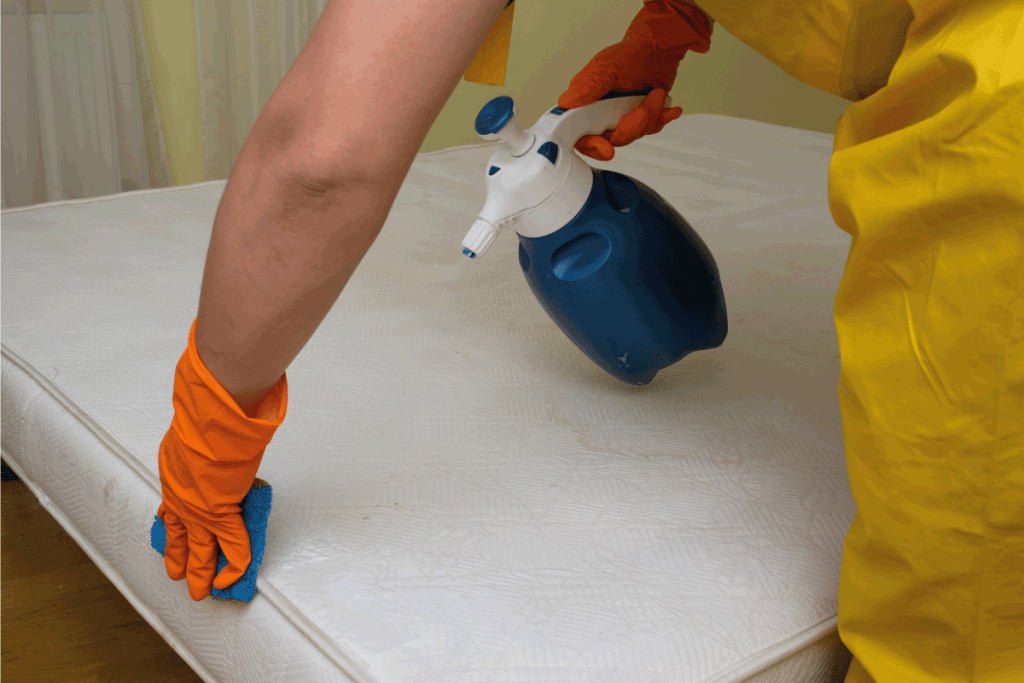
Bed bugs love to skulk in the shadows. They make a beeline for the seams in your suitcases and overnight bags. Similarly, they love your bedding and your folded clothes and even your furniture. If its cool and dark and they can hide and wait for their next meal, bed bugs could be lurking.
Here are two simple tips to avoid future infestations of bed bugs:
- When you travel and overnight in a hotel, always use a suitcase stand for your bag. Keep your bag and your clothes off the bed and off the floor. Position the suitcase stand away from room’s walls and don’t allow it to touch the room’s furniture. When you return home, wash your travel clothes and dry them in your dryer, as bed bugs hate heat.
- Always check any new or second-hand furniture before you bring it into your home.
It can take time and perseverance to get rid your home of the bed bug scourge. Happily, for most of us, bed bugs are more an annoyance than a significant health problem. Bed bugs do not transmit diseases to people.
Conclusion
Bleach is an effective solution for eliminating bed bugs in your home. The chemical ingredients in bleach can destroy bed bug eggs and larvae, as well as adult bed bugs. However, you don’t need to douse your entire home in bleach and, it is important to use caution when using bleach as it can damage fabrics and surfaces. Always use color-safe bleach on your fabrics and linens.
To avoid future infestations, you can take simple precautions such as using a suitcase stand when traveling and thoroughly checking new or second-hand furniture before bringing it into your home. Overall, while bed bugs can be an annoyance, they do not pose a significant health risk.
If you used bleach to kill bed bugs, we’d love to hear about your experiences.





